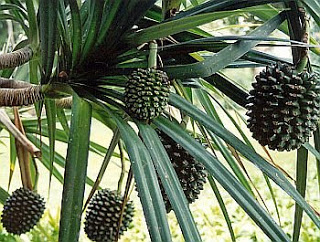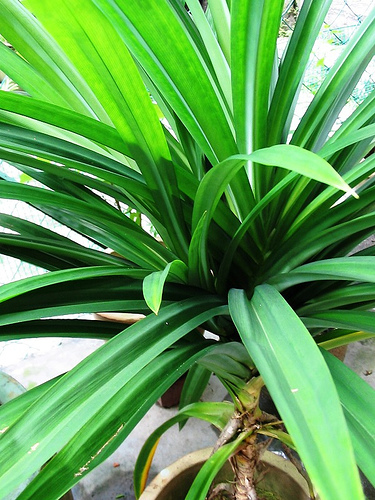Alternate Names: Screwpine Leaves, Kewra/Kewdaa, Rampe, Ban Lan, Toey/Taey/Tey Ban
These are Screw Pine Leaves. For those who have no idea or little, it’s a shrub with fragrant flowers.
In the ancient India, Chanakya has described the flower stressing the pleasant smell of it in following manner:
O ketaki flower! Serpents live in your midst, you bear no edible fruits, your leaves are covered with thorns, you are crooked in growth, you thrive in mud, and you are not easily accessible. Still for your exceptional fragrance you are as dear as kinsmen to others. Hence, a single excellence overcomes a multitude of blemishes.
But why is it important for foodies like us? The flowers of Screw Pine Leaves are used to extract perfume, aromatic oil (Kevda oil) and fragrant distillations (otto) called “Learro-ka-arak”. These are stimulant & antispasmodic and are used against headache and rheumatism.
But what would interest the foodies is the fact that its flowers are also used to flavour food, kewda essence is used in numerous Indian sweets like Rasgulla & Petha (candied gourd or winter squash)
These hard-to-find leaves are known to give your dish authentic taste as well as aroma making it even more sumptuous. Also known as Pandan leaves, they themselves are not typically eaten – they are used to enhance other flavours and to offer its distinct aroma. This is achieved in a few different ways, either by steeping the leaves in hot liquids (tie them in a knot and drop them in, remove when cooking is done), pounding the leaves to extract the oil, processing the leaves with a liquid then straining the solids out, wrapping the leaves around foods, or even by creating a cooking vessel out of the leaves.
The aroma it imparts also gives jasmine and basmati rice and white bread it’s scent. (YAY!)
It can be described as slightly nutty, grassy and generally “plant-y”, like what you’d smell if you were in a greenhouse.
Typically, it’s used for rice dishes such as nasi lemak (coconut rice), pulaos, and rice puddings. It’s also used for a pandan chiffon cake and apparently pairs well with chocolate in addition to coconut. In India, kewra water is used to flavour sweets and drinks.
A non-food related benefit of pandan is that the volatile oils responsible for its flavour and aroma act as a cockroach repellent. Something to remember, anyway.


